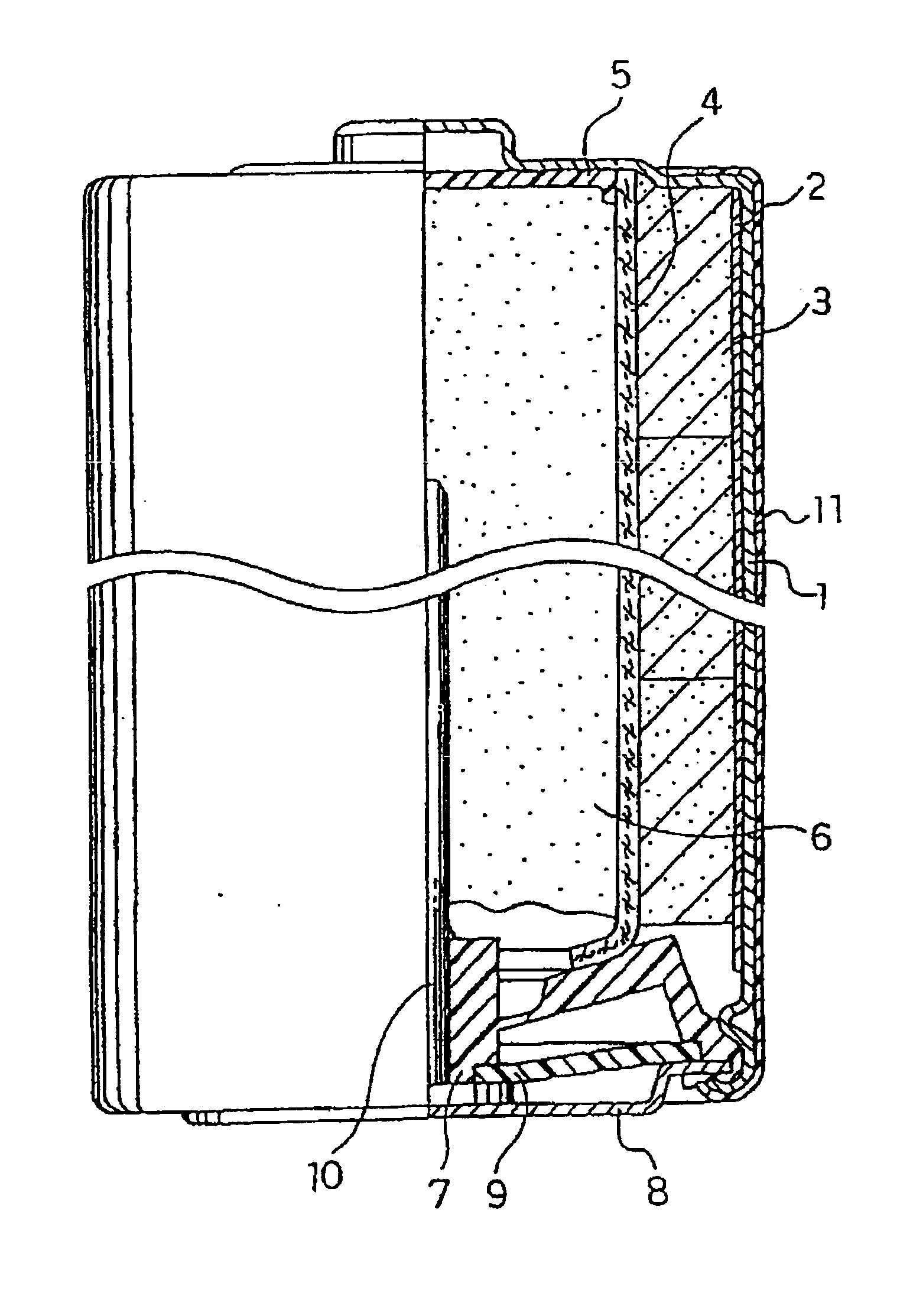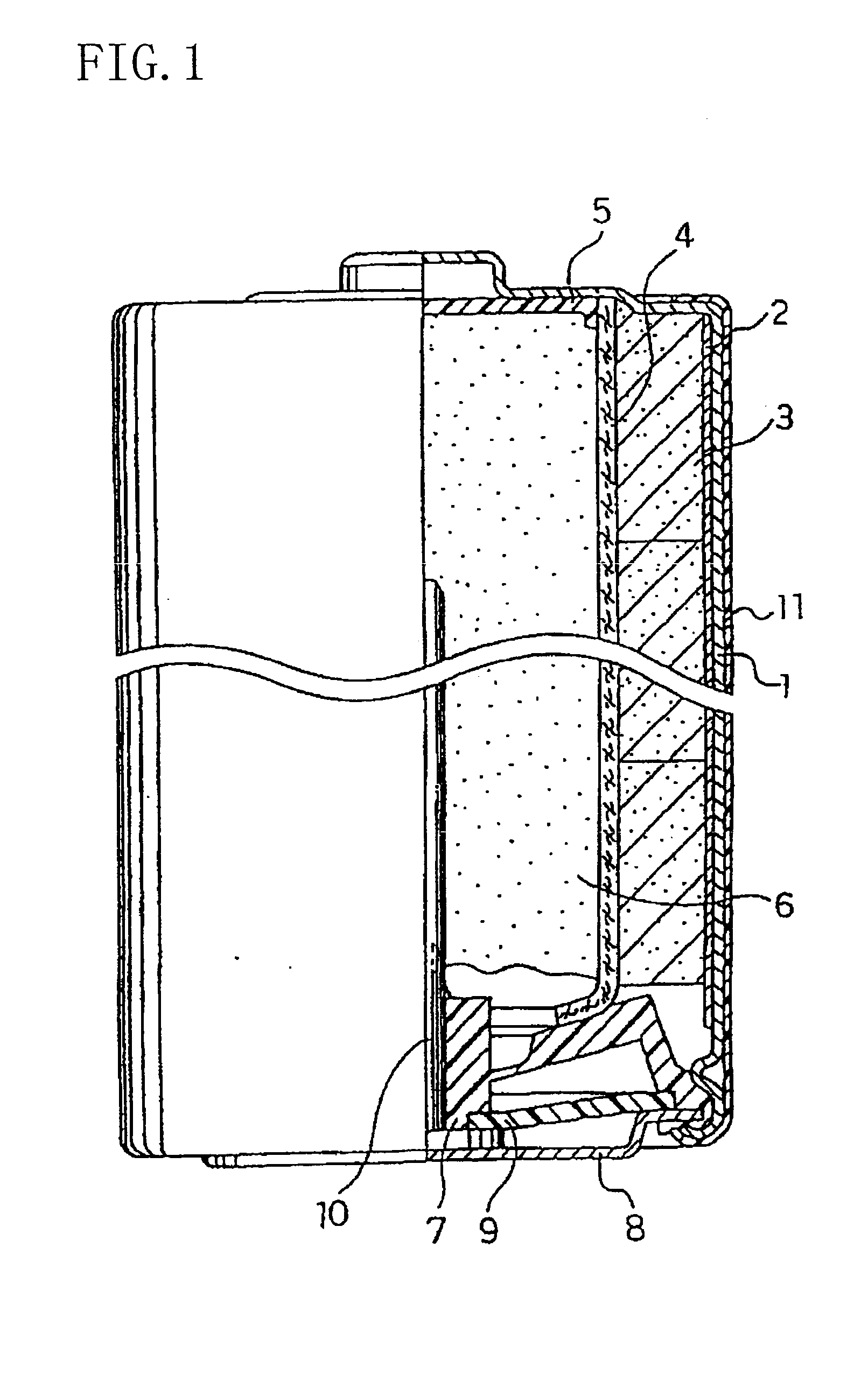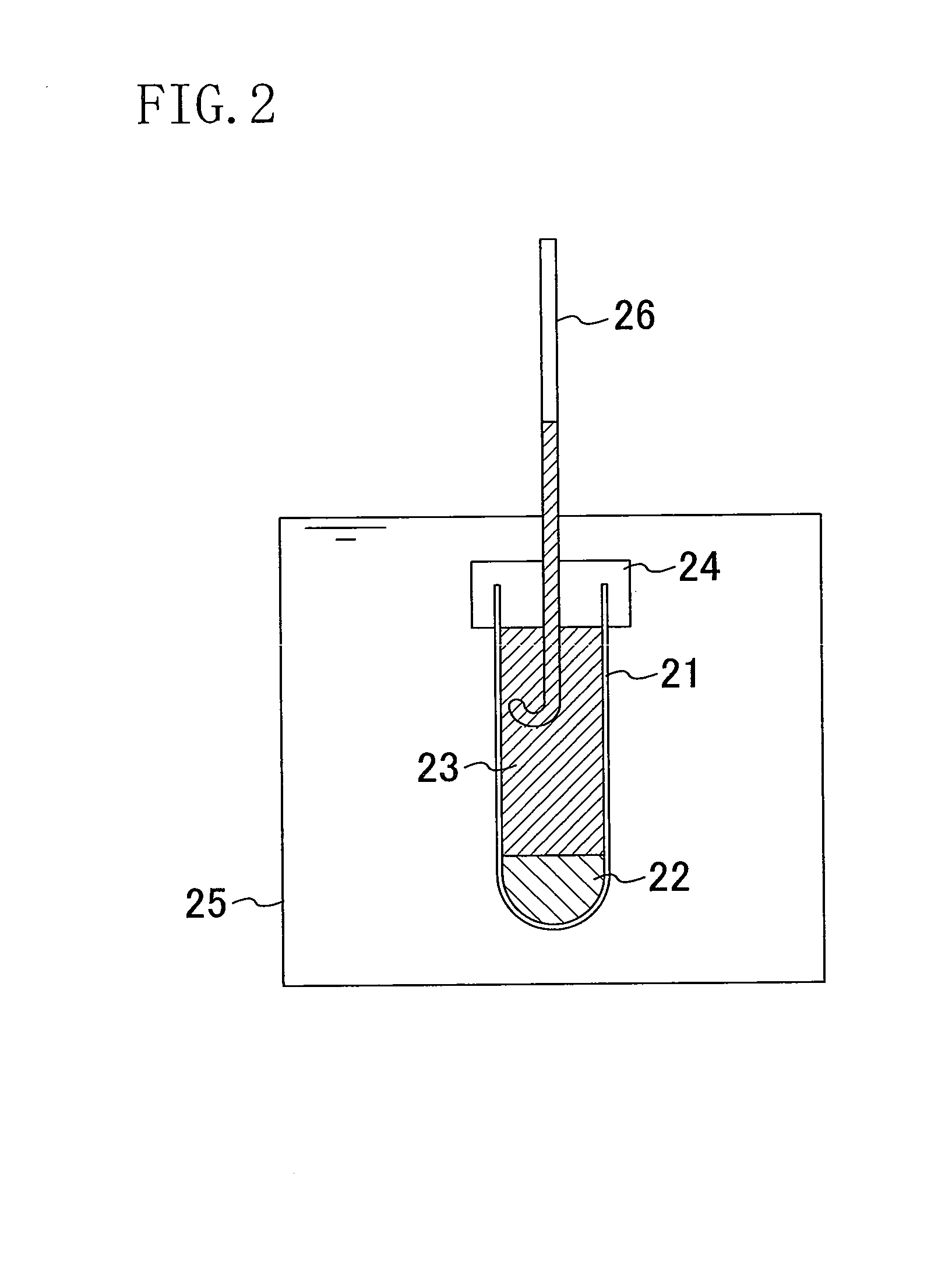Alkaline dry battery
a dry battery, alkaline technology, applied in the direction of non-aqueous electrolyte cells, primary cell maintenance/servicing, cell components, etc., can solve the problems of rising internal pressure of the battery, indium, one of the additives of zinc alloy powder, and inability to maintain the integrity of the negative electrode, so as to ensure the anticorrosion characteristic of the negative electrode
- Summary
- Abstract
- Description
- Claims
- Application Information
AI Technical Summary
Benefits of technology
Problems solved by technology
Method used
Image
Examples
example 1
[0054]Based on the results of the preliminary experiment, evaluation was carried out on batteries using various kinds of zinc alloy powder containing aluminum and indium in different amounts.
[0055]A zinc ingot of 99.99% purity or more was fused at a temperature higher than 500° C. Additive elements were added thereto in the composition ratio shown in Table 3 and the mixture was uniformly fused to obtain a liquid zinc alloy. Then, the liquid zinc alloy was powdered by spraying (atomizing) using high pressure gas to obtain zinc alloy powder. The obtained zinc alloy powder was sifted to obtain 35-300 mesh powder (the ratio of fine powder of 75 μm or less: 25%). In this manner, negative electrode active materials a to r were obtained.
TABLE 3NEGATIVEELECTRODEACTIVECONTENTS OF ADDITIVES IN ZINC ALLOY [wt %]MATERIALAlBiIna0.0060.0120.050b0.0060.0120.020c0.0060.0120.015d0.0060.0120.010e0.0060.0120.0001f0.0080.0120.015g0.0080.0120.010h0.0080.0120.0001i0.0100.0120.015j0.0100.0120.010k0.0100.0...
example 2
[0081]Close study has been made on thickness, sheet count and winding number of the nonwoven fabric separator.
[0082]To a predetermined amount of the gelled electrolyte used in Example 1, a negative electrode active material t (Al: 0.020 wt %, Bi: 0.015 wt %, In: 0.0001 wt %) in an amount of 1.8-times by weight was added and sufficiently mixed to prepare a gelled negative electrode T. The positive electrode mixture pellets used in Example 1 were used as the positive electrode.
[0083]As separator components, five kinds of vinylon-Lyocell composite nonwoven fabric sheets having different thicknesses of (1) 120 μm, (2) 150 μm, (3) 180 μm, (4) 200 μm and (5) 220 μm were prepared. After adjustment of size and the like, separators were prepared in accordance with the sheet count and the winding number shown in Table 6 and each of the separators was inserted in the positive electrode mixture pellets together with and an insulating cap. Then, an electrolyte (a 36 wt % potassium hydroxide solu...
example 3
[0092]In this example, a combination of a cellophane film and a nonwoven fabric sheet was used as the separator.
[0093]To a predetermined amount of the gelled electrolyte used in Example 1, a negative electrode active material t (Al: 0.020 wt %, Bi: 0.015 wt %, In: 0.0001 wt %) in an amount of 1.8-times by weight was added and sufficiently mixed to prepare a gelled negative electrode T. The positive electrode mixture pellets used in Example 1 were used as the positive electrode.
[0094]As separator components, the vinylon-Lyocell composite nonwoven fabric sheets of (11) 120 μm thick and (3) 180 μm thick used in Example 2, and cellophane films having different tensile strengths in the lateral direction of (c1) 20N / 15 mm, (c2) 30N / 15 mm, (c3) 40N / 15 mm and (c4) 50N / 15 mm (manufactured by Futamura Chemical Co., Ltd., about 30 μm thick) were prepared. The tensile strength was measured according to JIS P8113 using a tensile testing machine RTC-1150A manufactured by ORIENTEC Co., Ltd.
[0095]A...
PUM
| Property | Measurement | Unit |
|---|---|---|
| Temperature | aaaaa | aaaaa |
| Length | aaaaa | aaaaa |
| Length | aaaaa | aaaaa |
Abstract
Description
Claims
Application Information
 Login to View More
Login to View More - R&D
- Intellectual Property
- Life Sciences
- Materials
- Tech Scout
- Unparalleled Data Quality
- Higher Quality Content
- 60% Fewer Hallucinations
Browse by: Latest US Patents, China's latest patents, Technical Efficacy Thesaurus, Application Domain, Technology Topic, Popular Technical Reports.
© 2025 PatSnap. All rights reserved.Legal|Privacy policy|Modern Slavery Act Transparency Statement|Sitemap|About US| Contact US: help@patsnap.com



